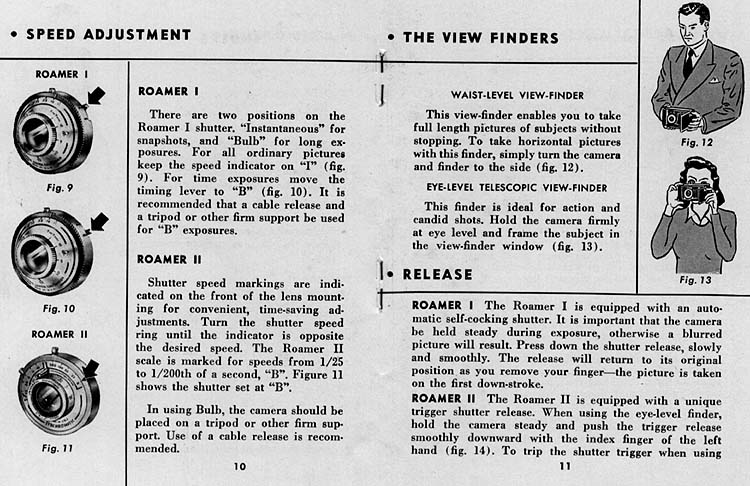The Universal Roamer
Paul Trent's camera
At the suggestion of Trent photo expert Brad Sparks, researcher David Rudiak located a photo in the Portland "Oregon Journal" newspaper that helps identify Trent's camera.
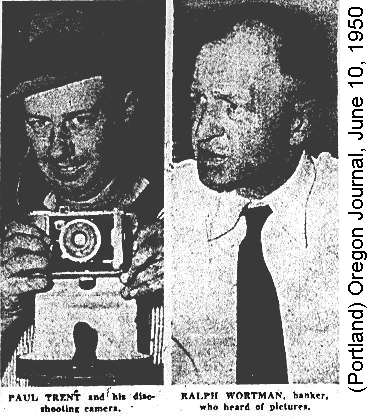 |
According to vintage camera expert David Silver (President of the International Photographic Historical Association), it's the evocatively named Universal Roamer I, made just after WWII by the Universal Camera Corporation ("Univex") of New York City. The Roamer was an inexpensive folding camera with a single shutter speed (1/50th sec, relatively slow) and adjustable focus and aperture. It used 120 or 620 film and produced negatives 2.25" X 3.25" in size. It cost about $30.00 when it was introduced in 1948. The newspaper photo shows that Trent had spent a little extra to buy the accessory leatherette case for the camera.
The camera looks impressive but is actually very crudely made, heavy and and clunky. The optics are far from top quality. Its best feature is its large negative size. This type of camera lacked basic features found even on modern single-use cameras, such as indexed film winding -- in other words, when a photo is taken, the user must look at a small window in the camera back while winding the advance knob to the next exposure. When the number of the next frame (printed on the film backing) appears, the user simply stops winding the film. This certainly facilitates double exposures, but increases the time needed to advance the film between frames.
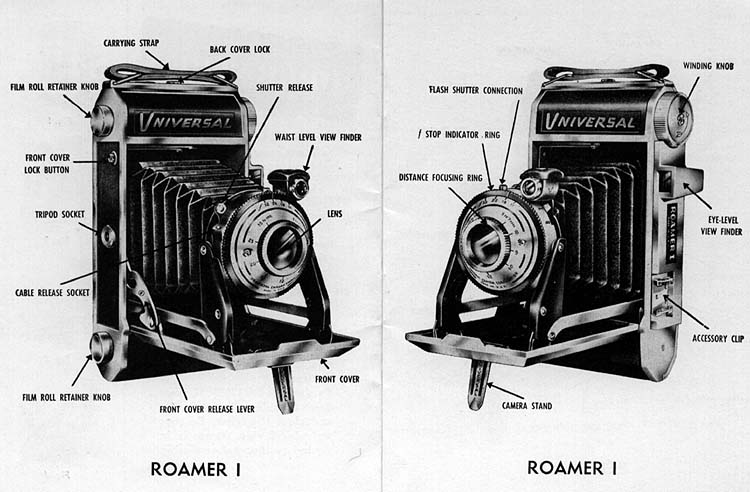
A subtle but noteworthy point is that the focusing ring extends considerably as it is turned, and must be set to the "infinity" position before the lens can be folded and the camera door closed. It could be inferred that if Trent were in a hurry to take his photos, he probably left the lens in this position.
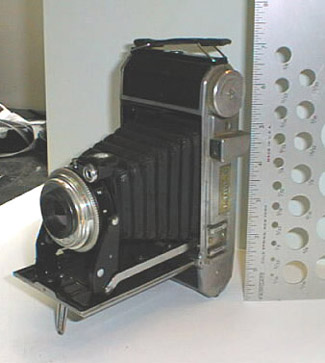 |
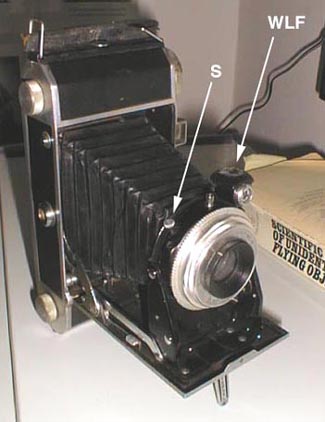 |
"S" indicates the shutter release (which is triggered by pushing down and to the left in this view). "WLF" is the waist-level viewfinder, a small device used when taking photos with the camera at the user's mid-abdomen level. Arrows below indicate the shutter release on Trent's camera compared with the reference sample camera.


The manual claims that the waist-level finder "enables you to take full length pictures without stopping [sic]." This probably should read "without stooping," but in any case it's an absurd exaggeration. The half-inch square finder is suitable for framing objects like buildings, but using it to track a small object like the UFO would be very difficult, particularly considering the left-right reversal of the image.
